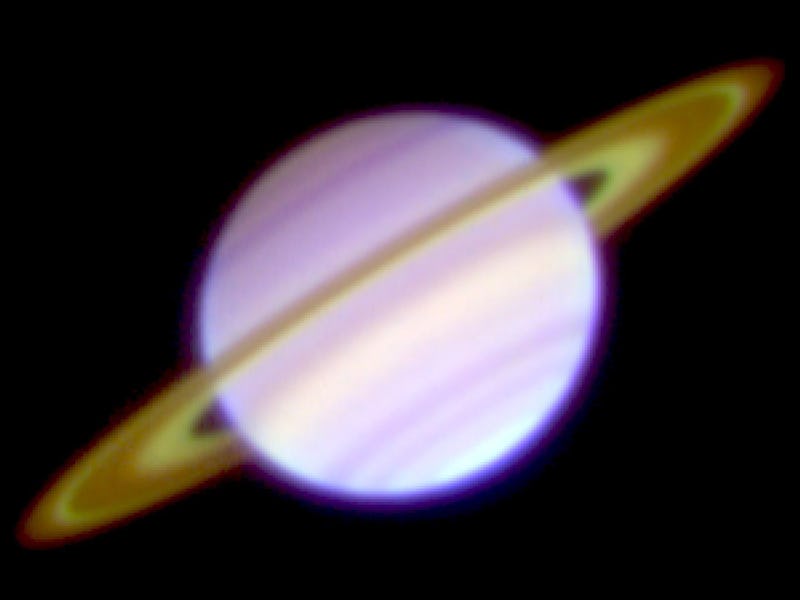
Saturn’s iconic rings just got even more beautiful for the scientists studying them.
The team, who published their study in the journal Astronomy & Astrophysics found some striking new details, about the rings when analyzing mid-infrared images from the Subaru Telescope taken in 2008. The Cassini Division — the darker space between the A and B rings — and the equally empty-looking C ring are actually much lighter in infrared contrasted with the A and B rings. So, the image of Saturn looks completely different in mid-infrared light than it does in visible light.
A composite of mid-infrared images from the Subaru Telescope.
By measuring the thermal emissions from particles in each ring, the team confirmed that the C ring and the Cassini Division are much hotter than the A and B rings. The team believes the particles in the C ring and Cassini Division are hotter because they may be more sparsely scattered than in the A and B rings and they are on a darker surface, which, absorbs solar radiation much quicker.
The Cassini Division and C ring may seem lighter in mid-infrared but they are still fainter than the A and B rings, though it did seem to shift in brightness from 2005 to 2008. After reviewing data, the team concluded that the shift occurs when Saturn’s axial tilt is angled toward the sun, so the spotlight from the sun can make the particles seem brighter because they are reflecting the light. Based off the rotation of Saturn in comparison to its orbit around the sun, this shift in brightness would occur every 15 years.
“I am so happy that the public information activities of the Subaru Telescope, of which I am in charge, led to this scientific finding,” said Hideaki Fujiwara, lead author of the study, in a press release. “We are going to observe Saturn again in May 2017 and hope to investigate the nature of Saturn’s rings further by taking advantages of observations with space missions and ground-based telescopes.”
With this new information in hand, it will be interesting to see what else Saturn has hiding up its rings this spring.